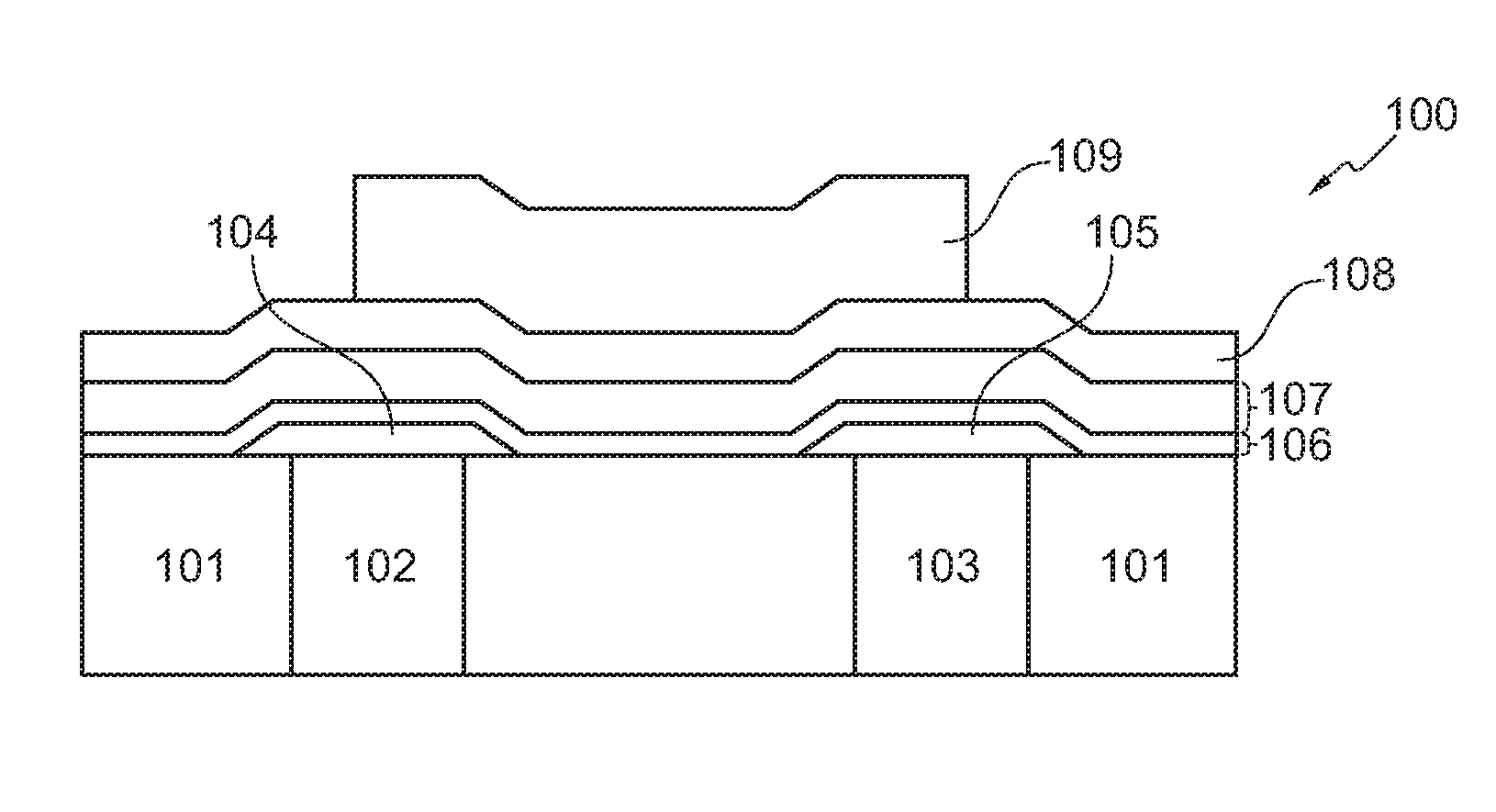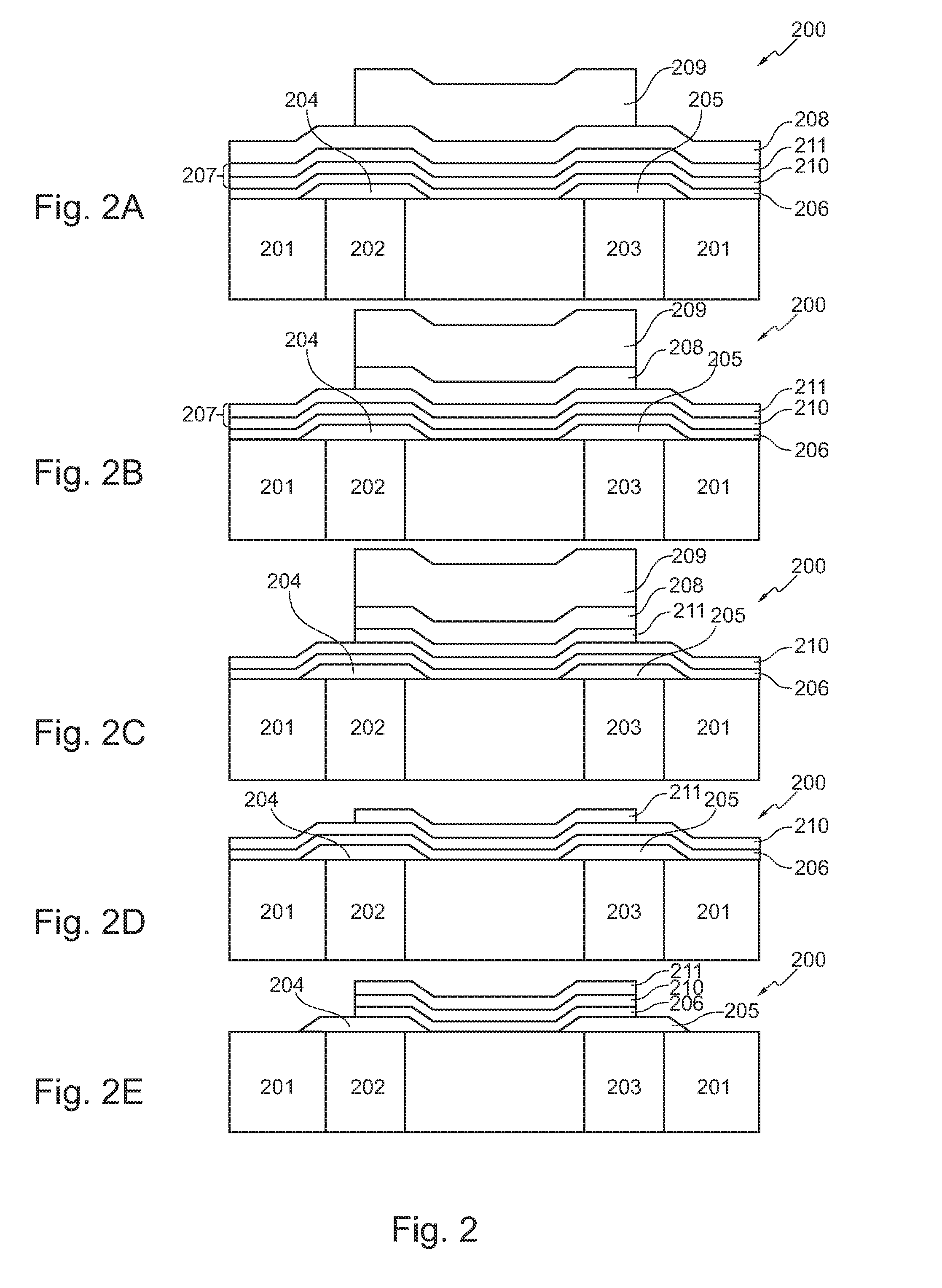Multilayer structure comprising a phase change material layer and method of producing the same
a technology of phase change material and multi-layer structure, which is applied in the direction of semiconductor/solid-state device manufacturing, basic electric elements, electric devices, etc., can solve the problems of local temperature increase, flash memory scaling beyond 45 nm nodes, and the inability to meet the requirements of phase change memory production processes,
- Summary
- Abstract
- Description
- Claims
- Application Information
AI Technical Summary
Benefits of technology
Problems solved by technology
Method used
Image
Examples
Embodiment Construction
[0032]The illustration in the drawing is schematically. In different drawings, similar or identical elements are provided with similar or identical reference signs.
[0033]FIG. 1 shows a schematically process flow for patterning a phase change material layer according to a first exemplary embodiment of the invention. In particular, Fig. 1A shows a multilayer structure 100 which may be a part of a memory cell, wherein the multilayer structure 100 comprises a base layer 101 and two conductor paths 102 and 103 burrowed in the substrate 101 or formed by a damascene process. The conductor paths may be formed of metal, e.g. copper. The conductor paths 102 and 103 are connected to electrodes 104 and 105, respectively, which may be formed by tantalum-nitride (TaN) for example. On the substrate 101 and the electrodes 104 and 105 a phase change material (PCM) layer 106 is formed e.g. by using GeTe-Sb2Te3 such as Ge2Sb2Te5. Onto the PCM layer 106 a protective layer 107, e.g. a protective insulat...
PUM
| Property | Measurement | Unit |
|---|---|---|
| thickness | aaaaa | aaaaa |
| phase change | aaaaa | aaaaa |
| phase | aaaaa | aaaaa |
Abstract
Description
Claims
Application Information
 Login to View More
Login to View More - R&D
- Intellectual Property
- Life Sciences
- Materials
- Tech Scout
- Unparalleled Data Quality
- Higher Quality Content
- 60% Fewer Hallucinations
Browse by: Latest US Patents, China's latest patents, Technical Efficacy Thesaurus, Application Domain, Technology Topic, Popular Technical Reports.
© 2025 PatSnap. All rights reserved.Legal|Privacy policy|Modern Slavery Act Transparency Statement|Sitemap|About US| Contact US: help@patsnap.com



